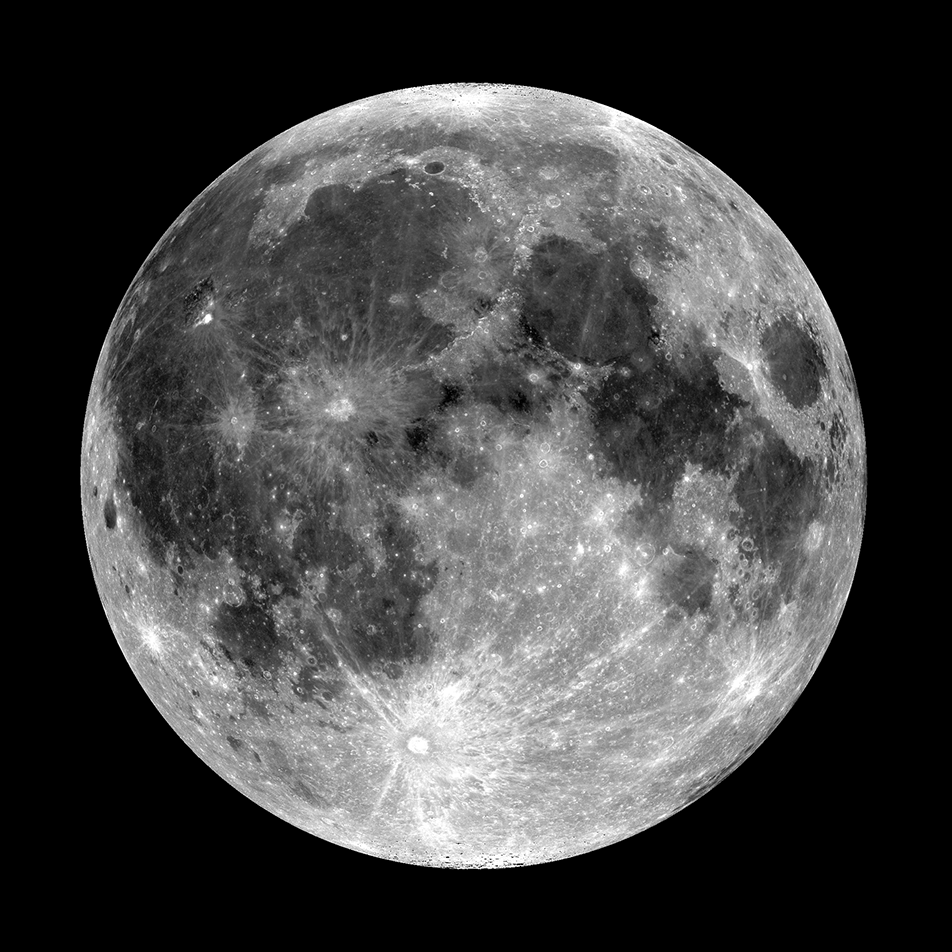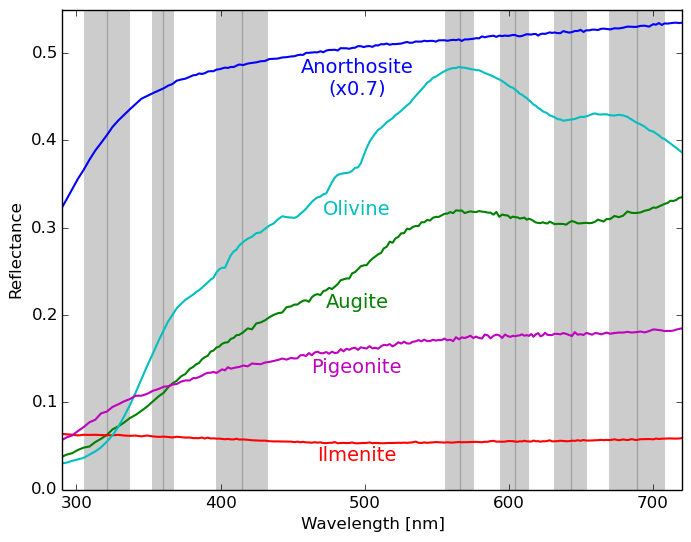
Scientists have long sought to understand details of the volcanic and thermal history of the Moon. One of the more puzzling questions revolves around the mineral ilmenite (FeTiO3), an iron- and titanium-bearing oxide. Ilmenite, and titanium in general, is fairly rare in basalts on the Earth, especially when compared to lunar basalts which can contain over 10% TiO2 by weight. Thus understanding the global distribution of ilmenite on the Moon, and why it varies so substantially, is a key goal. The LROC Wide Angle Camera (WAC) was specifically designed to detect ilmenite using ultraviolet (UV) and visible reflectance.

Why UV? While all other lunar minerals show fairly strong decreases toward the shortest wavelengths seen by the WAC, ilmenite is unique in that it has a slight increase in reflectance at wavelengths below ~415 nm (see figure above). Thus comparing images acquired through the UV filter (321 nm) to images from a visible filter (415 nm, in this case) can provide an index used to understand the abundance of ilmenite on the Moon's surface. To know just how much titanium is there, the titanium concentrations in Apollo soil samples measured in the laboratory are compared to the reflectance spectra of Apollo landing sites measured by the LROC WAC. By carefully deriving a correlation between TiO2 content and 321/415 nm reflectance, the TiO2 (and thus ilmenite) abundance can be estimated across the globe!

The new TiO2 abundance map produced by the LROC team indicates that the highest TiO2 abundance on the Moon is approximately 12% by weight, which is approximately 7% lower than the previous estimates based on visible reflectance alone. This UV-based result better matches results from the Gamma-Ray Spectrometer (GRS) on the Lunar Prospector mission, which provides much lower resolution measurements of titanium abundance, and gives confidence to using the higher-resolution WAC map to interpret the composition of small lunar features.
The WAC titanium map also provides new insights into how the ilmenite content varied over billions of years of lunar volcanic history. The oldest eruptions of basalt had a large range of TiO2 content and were widespread across the Moon. But around 2.6 billion years ago, a transition to higher-TiO2 eruptions occurred, and these eruptions were limited to within a more restricted area (Oceanus Procellarum). This transition may have been linked to the Moon's thermal evolution, where an early, hotter interior erupted basalts of all compositions, but later on radioactive heat sources (typically high in abundance when titanium is also high in abundance) were required to produce the heat needed to melt the lunar mantle and erupt basalts to the surface.
Explore the full-resolution (400 m/pixel) WAC TiO2 abundance map (overlaid on the WAC morphology mosaic) below, or download it from the LROC RDR archive page.